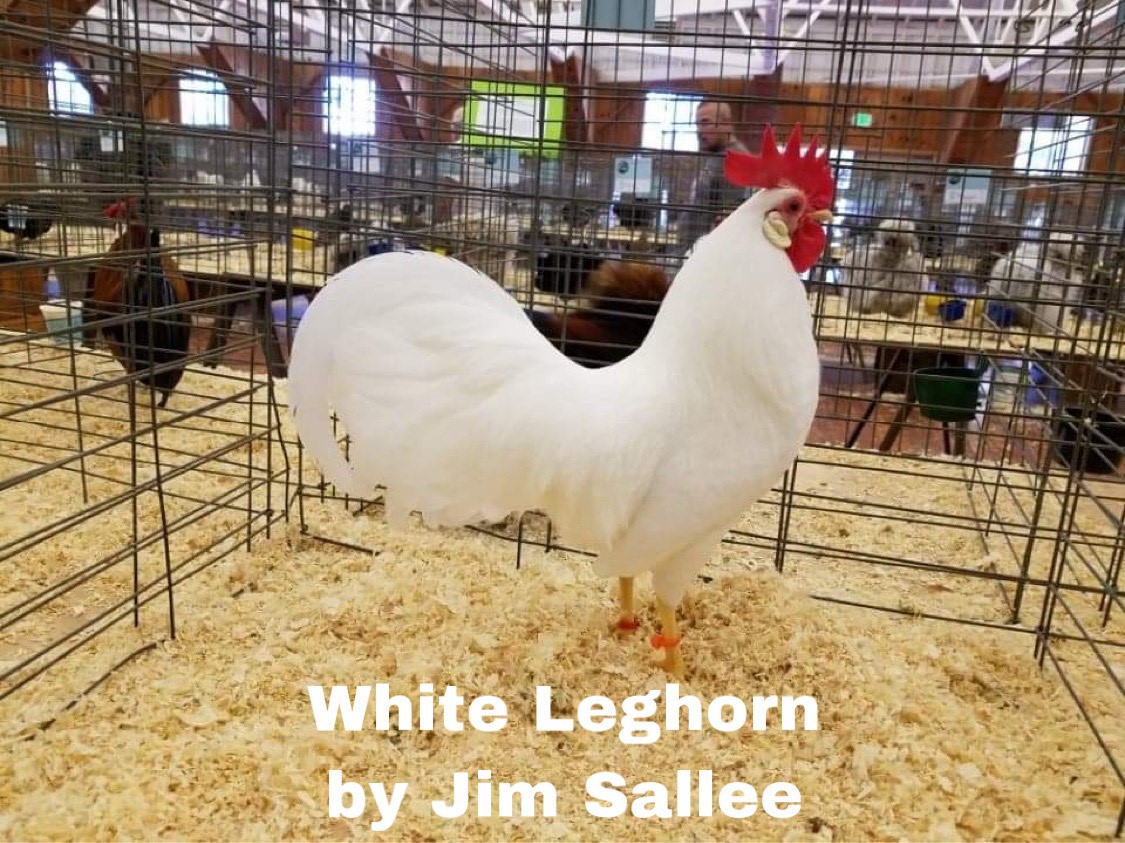Several scientific studies completed in the early 1900s, including those by Bateson (1902), Hurst (1905), and Hadley (1913), found that the white Leghorn carries an autosomal gene capable of inhibiting the development of black pigment in plumage. Hadley (1913) designated this gene as “I” (inhibitor of black pigment), otherwise known as the Dominant White gene. When white Leghorns were crossed with breeds that have solid black plumage, the offspring produced were predominantly white.
Hadley found that in this instance, the genes necessary for black pigment are present but do not manifest themselves due to the inhibiting action of the gene. Pigment is formed by melanocytes in feather producing cells, but there is a nontransfer of pigment by melanocytes to keratinoblasts.
Dominant White, Dun, and Smoky are alleles at the Dominant White locus. Dominant White and Dun inhibit the expression of black eumelanin. Analysis has revealed that Dominant White, Dun, and Smoky occur due to mutations of the PMEL17 (premelanosomal protein) gene. These are the only PMEL17 mutations that have been found to have a phenotypic effect in poultry.

“Sequence analysis showed that the Dominant White allele was exclusively associated with a 9-bp insertion in exon 10, leading to an insertion of three amino acids in the PMEL17 transmembrane region. Similarly, a deletion of five amino acids in the transmembrane region occurs in the protein encoded by Dun. The Smoky allele shared the 9-bp insertion in exon 10 with Dominant white, as expected from its origin, but also had a deletion of 12 nucleotides in exon 6, eliminating four amino acids from the mature protein.”
- A white homozygote (I/I) which results in a white phenotype
- A heterozygote (I/ I+) which results in a black-flecked phenotype
- A homozygous recessive (I+/I+) which results in a black phenotype.
Modifying genes, which limit or expand the amount of black on a heterozygote, affect the overall number of black feathers present on the plumage. The modifying genes also affect whether the black plumage feathers will be solid black and the white plumage feathers solid white.

References:Bateson, W., 1902. Reports to the Evolution Committee of the Royal Society. London, Harrison, 160pp.
Hadley, 1913. Studies on the inheritance of poultry. I, The constitution of the White Leghorn breed. Rhode Island Agric. Exp. Sta., Bull. 155: 151-216. Plates I-IIL
Hurst, C . C , 1905. Reports to the Evolution Committee of the Royal Society. Report II. Experiments with poultry, pp. 131-154.
Kerje, S. The Dominant White, Dun and Smoky Color Variants in Chicken Are Associated With Insertion/Deletion Polymorphisms in the PMEL17 Gene Sequence, Genetics, Volume 168, Issue 3, 1 November 2004, Pages 1507–1518, https://doi.org/10.1534/genetics.104.027995
Kimball, E. On the Nature of White Plumage, Poultry Science, Volume 37, Issue 3, 1958, Pages 730-731, ISSN 0032-5791, https://doi.org/10.3382/ps.0370730. (https://www.sciencedirect.com/science/article/pii/S0032579119576374)
Lippincott, W. The Hereditary Relation of Dominant White and Blue in Chickens. Poultry Science, Volume 2, Issue 5, 1923, Pages 141-145, ISSN 0032-5791, https://doi.org/10.3382/ps.0020141. (https://www.sciencedirect.com/science/article/pii/S0032579119567670)
Sato, S. Mapping of the Recessive White Locus and Analysis of the Tyrosinase Gene in Chickens, Poultry Science, Volume 86, Issue 10, 2007, Pages 2126-2133, ISSN 0032-5791, https://doi.org/10.1093/ps/86.10.2126. (https://www.sciencedirect.com/science/article/pii/S0032579119392430)
Smith, L.T. On the Allelism of Blue Plumage and Dominant White, Poultry Science, Volume 48, Issue 1, 1969, Pages 346-347, ISSN 0032-5791, https://doi.org/10.3382/ps.0480346. (https://www.sciencedirect.com/science/article/pii/S0032579119528899)
